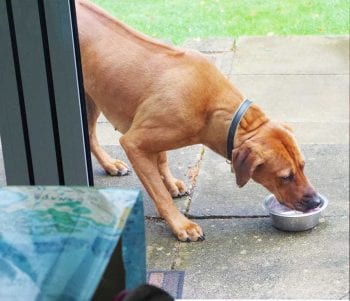All UK businesses have a duty of care towards their staff, customers and visitors, and practices are no exception. The aim of health and safety legislation is to minimise risk, and failure to do so renders those responsible for causing harm liable to prosecution. For further general details, visit www.hse.gov.uk/business
Perhaps surprisingly, a search of the RCVS Code of Professional Conduct for Veterinary Surgeons using the terms zoonoses, infection, biosecurity, public protection or disease transmission failed to find any specific guidance on this matter.
Many hospital-acquired (nosocomial) infections (HAIs) are not diagnosed as such, so reliance on published cases is unreliable and can result in complacency. In human medicine, studies suggest up to 70% of HAIs are preventable by applying simple infection control procedures1. The Australian Veterinary Association has published an excellent set of Guidelines for Personal Biosecurity.
The American Animal Hospital Association (AAHA) has also published excellent guidelines – available at http://bit.ly/2RX1ddL – and recommends: “Every veterinary practice should have a documented infection control, prevention, and biosecurity program. At a minimum, this should be a collection of agreed-upon basic infection control practices and accompanying standard operating procedures (SOPs), growing into a formal manual incorporating specific staff education and training, client education, surveillance, and compliance programs.”
Veterinary practices have a duty of care towards staff, clients and other visitors. As patients attending a practice may be carrying zoonotic infectious agents, it is incumbent on the practice to put in place adequate biosecurity procedures to minimise risk of transmission to other animals and humans.
A few years ago, in the US, a pre-veterinary student was working in a veterinary hospital and came into contact with urine from a dog with “pyrexia of unknown origin”. He subsequently died from leptospirosis, and the practice was found liable for the death and for negligently exposing staff to risk of exposure to zoonoses as, even though the profession is aware animals they see may be carrying serious infections, inadequate biosecurity was in place to prevent exposure.
Objectives
The two main objectives in biosecurity are to prevent introduction of infections into premises, and contain and eliminate infectious agents that do gain access to premises. Prevention of exposure is a critical part of containment, and it is especially necessary to protect high-risk people and animals from exposure. Basic biosecurity procedures should be applied to all patients attending a veterinary practice, and these include:
- Washing hands after handling.
- Cleaning up and disinfection as soon as possible after any biological secretions and excretions – including urine, faeces, vomitus, saliva, sputum, hair and dander – are passed into the environment.
- Disinfectants to clean the environment should be broad spectrum in activity, unless a specific pathogen has been identified, and for the protection of other patients kill viruses – such as canine parvovirus and feline infectious enteritis – as well as bacteria.
As ectoparasites can act as vectors for zoonotic pathogens, it is important to regularly treat veterinary premises to eliminate infestations. However, more extensive measures are required for prevention of exposure to zoonotic agents when dealing with high-risk patients – especially animals with the following signs:
- diarrhoea
- vomiting – for example, Salmonella, Campylobacter, Escherichia coli, Listeria and Norovirus
- coughing – for example, Bordetella bronchiseptica and TB
- pyrexia of unknown origin – for example, leptospirosis
- all dogs fed raw foods – even if they are apparently healthy and asymptomatic, as they are likely to be carrying and shedding zoonotic pathogens
Animals with these signs, or those fed raw, should be treated as very high risk and, if necessary for them to be accepted on to veterinary premises, kept in isolation and barrier nursed. All steps should be taken to minimise the chance of transmission to other animals and people.
The first leptospirosis case the author saw was in a farm dog a few months after he qualified. It was very ill with a pyrexia (42°C), so he took a blood sample and sent it to the University of Liverpool, asking it to look for leptospirosis. The university telephoned the author back an hour later warning that it had found live leptospires in the sample – the dog had been hospitalised in a general ward and, of course, the author had not worn gloves and did not take full aseptic precautions when collecting or packaging the sample.
He and colleagues immediately embarked on a deep cleaning of the practice rooms and started barrier nursing the patient. Fortunately, none of the staff or patients contracted the disease, despite the author putting them at risk.
Practical steps to take for high-risk outpatients include:
- if possible, examine the patient away from the practice, or in an isolation area
- restrict the parts of the practice the animal has access to
- prevent direct contact between the animal and other animals or people on the premises
- wear suitable protective clothing when examining the animal, to include disposable clothing such as gowns and shoes/boots, masks and gloves
- always wash hands diligently after handling high-risk patients – even when wearing gloves
- dispose of all waste as clinical waste
For hospitalised patients, strict barrier nursing includes:
- Keep in isolation.
- Use a disinfectant footbath.
- Wear protective clothing.
- Dispose or diligently clean all instruments that come into contact with the animal immediately after use – including contact with thermometers, otoscopes and stethoscopes.
- Use utensils – for example, feeding and water bowls – just for the one animal and steam clean or dispose of them afterwards. Routine cleaning – even scrubbing with 10% bleach – has been shown to be ineffective at killing organisms such as Salmonella on utensils2.

Owners of high-risk patients should be warned about the risks to themselves and other people, and they should be given written instructions on how to minimise the risks. In the case of clients who insist on feeding raw foods to their pets, they need to be made aware that serious illness and deaths have been reported in people as a result of feeding raw pet foods.
As these animals represent a risk to veterinary staff, practices should record all such animals and barrier nurse them when they attend the practice. In the US, many practices now ask clients to sign a document confirming they have been advised of the risks of feeding raw. This is important as, should a practice know a patient is fed raw, but fails to advise an owner of the associated risks, the vet could be considered responsible, should a serious illness occur.
Humans considered at high risk for contracting serious infections should never be allowed in contact with high-risk patients or fomites, and these include:
- Children younger than five years old.
- Elderly people.
- Pregnant women.
- People with immunosuppression – due to disease or medication. For example, modified live vaccines including canine B bronchiseptica can cause illness and deaths in immunosuppressed humans.
Disposal of clinical waste is one area that is well understood by veterinary practices. Most display educational posters in work areas, such as that provided by the BVA, and compliance is generally very good. However, other precautions that are important to prevent zoonotic transmission include diligent personal hygiene, wearing protective clothing (personal protective equipment) when taking or handling biological samples or tissues, and not re-sheathing needles after they have been used, as needlestick injuries are common during this process.
Best practice would be for a practice to develop a biosecurity protocol that all staff can be trained in. Experienced practitioners in biosecurity agree it is important to appoint someone responsible for administering the practice programme, which should include development and implementation of SOPs and training of staff, as well as educational materials for clients. This person would also document breaches in security and ongoing audit of its effectiveness. The AAHA Guidelines 2018 provide a useful series of protocols that can be easily applied in practice.
The success of any biosecurity system should be monitored by regular checking, such as checking cleaning processes by swabbing work areas or the use of ultraviolet reflective materials. All breaches of security should be fully documented and steps taken to improve compliance.
Conclusion
Staff and visitors to veterinary practices are likely to be exposed to zoonoses and the practice has a duty of care to minimise such risks. It is, therefore, important to put in place rigorous biosecurity procedures and comply with best practices to reduce risk of exposure to avoid liability should a patient or person contract a serious disease.
